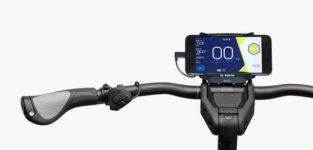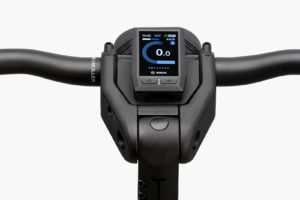
Duncan
Duncan is behind our web content; working with Dan's creative talents is no mean feat. Not content with crafting compelling stories online, Duncan also takes on the role of the EDEMO crash test dummy, demonstrating a fearless pursuit of improvement and safety in everything he does.
Riese & Müller’s latest offering, the Culture, stands out for its aesthetic looks, urban-focused design, and thoughtful integration of comfort, sustainability, and performance.
It’s a bike that is a welcome addition to the R&M range and competes with the Van Moofs and the Cowboys to offer a well-conceived premium commuter and leisure electric bike. It rides and looks much like a traditional bike but with the performance of the new Bosch SX motor.
Frame, Gearing Options and Pricing
Whilst the Culture’s options are relatively simple compared to those of other Riese and Muller bikes, there are still two different frame geometries and three different gearing specifications to choose from.
Frame-wise, you can choose between the regular or mixte, the mixte offering a lower, step-through frame. The regular frame top tube is slightly lower than the conventional top tube. Both are great for hopping on and off in an urban environment.
For gearing, there is a choice between the traditional Touring version with a chain and cassette, a Silent version featuring an 8-speed Nexus hub, and a Vario version with a continuously variable Enviolo hub.
We tested the Touring with the chain and cassette and found it a great ride. The Shimano Cues 10-speed derailleur provides a decent range of gears and works well with the bike’s fast and lightweight setup. Dan found that he rarely needed to take the bike motor assistance level above the two lowest settings (‘Eco’ and ‘Touring’); it rolls well with low resistance from the drive train, which, as well as feeling great, also reduces the work that the motor is doing and so helps to improve the range for 400Wh bike.
For riders who want a low-maintenance belt drive setup, there’s the option of the Silent (Shimano Nexus) or the Vario (Enviolo continuous hub gear). I asked AJ what he thought of the difference between these two options and what sort of rider might choose one over the other. He said:
"The Shimano Nexus offers a commendable balance of functionality and lightness, making it an attractive option for casual cyclists who enjoy riding in fine weather conditions. While it boasts a satisfactory gear range and minimal drag, it's important to note its moderate durability. The weatherproofing and internal components may not withstand extended or intensive use. Hence, it's best suited for occasional riders seeking a lightweight and efficient gear system. In contrast, the Vario hub stands out for its durability and broader gear range (compared to the Nexus), albeit at the expense of increased weight and drag. Designed to endure upwards of 20-30,000 miles, its robust construction features well-sealed bearings operating in a sealed oil bath, offering remarkable reliability even under frequent and rigorous use. The continuously variable gear system ensures optimal performance, making the Vario an exceptional choice for urban commuters who value consistency and versatility across various weather conditions."
A Touring specification bike starts at 21.3Kg, Silent at 21.8Kg and Vario 22.3Kg. Price-wise, before adding extras, the Touring is £3789, Silent £4069 and the Vario £4259.
Colours and Sizing
We like the colours available, although there is a difference between the regular and mixte versions. The regular Culture is available in biscuit (as tested) or denim, whereas the mixte comes in blossom or denim.



Both the regular and the mixte come in three sizes: 50cm (suitable for a rider height of 160-175cm), 56cm (170-185cm) and 62cm (180-200cm). The frame feels relatively large on the regular bike; the 56cm felt comfortable at around 6ft. The maximum rider weight on the Culture is 110 kg, which is lower than that of bikes such as the Charger4 (125 kg), so if you’re a larger rider, this is something to consider if you’re looking at the Culture. We’re happy to help with sizing, or you can pop in for a test ride.
Battery and Motor
The Culture is powered but the Bosch Performance Line SX motor. This lightweight motor is perfect for urban use. It’s lightweight (approximately 2kg vs 2.9kg for the CX), inconspicuous and quiet, yet it still has more than enough power for most activities. The motor can put out 55Nm of torque, which sounds like a significant drop versus the 85Nm of the CX motor. However, it certainly doesn’t feel like it on this bike. We found it fast and powerful up hills, even in lower assistance settings. We know from many of our customers that a quiet motor is a bonus!
The SX motor is paired with a 400Wh battery, which is not removable from the frame (except by a mechanic). This is a departure from Riese and Muller’s usual system; however, it makes sense with an urban-focussed bike. Battery theft is rising as they’re easily resold compared to bikes. It also matches the design principles of the Culture; it’s simple and looks akin to a regular bike. It’s not a big deal, provided you can plug the bike in to charge it, compared with taking the battery to the charger.
For riders wanting extra mileage out of the Culture, there is the option of the Powermore Range Extender 250 upgrade. This 250Wh battery is removable and attaches to the bottle cage. It’s perfect if you’re the sort of rider who might want to go for a longer ride at the weekend. Depending on conditions, it can push up the range to approximately 40-60 miles.


Wheels, Suspension, Lighting
The Culture has 28-inch wheels that roll well and are paired with Schwalbe Big Ben tyres. They’re slightly more chunky than many urban bikes but that makes them perfect for cornering and soaking up the potholes and bumps on the UK roads. We tested the Suspension kit upgrade for the Culture, which costs an additional £94 and replaces the rigid forks with a Suntour suspension fork with 63mm of travel and a suspension seatpost. This upgrade certainly makes the bike more comfortable and better equipped for curbs and cobbles, but if you want to keep the weight down, it’s best to stay rigid.
There are front and rear mudguards included. The rear has a beautifully integrated rear light that looks really smart and minimalist yet is pretty powerful. At the front, you get a Herrmans light that is also integrated with the battery.

Cockpit and Displays and Racks
To keep this bike minimalist, the Culture comes with the LED Remote as standard. This display works nicely, using LED lights to indicate power settings. It can be upgraded to the Purion 200 for more complete information. We like the Purion 200; it’s super easy to read in all conditions and unobtrusive, and it is a £66 upgrade.
For carriage, the Culture has an optional rear rack for an additional £94. We think this is a worthwhile upgrade especially for an urban bike. Most people want to carry some shopping or a bag at some stage so we think this is pretty essential. There’s no option for a front mount on the Culture.
Conclusion
As you can tell, the Riese and Muller Culture is a fantastic bike. It rides beautifully, feels agile and is comfortable. It would make a brilliant commuter bike that can handle most conditions and is perfect for weekend rides out of the city or for general use.
The Culture is also Riese and Müller’s most sustainable bike with a recycled aluminium frame. Read more about the Culture’s eco credentials here >>
Why not see one for yourself and test ride one in the beautiful surroundings of the Cotswolds?
WANT TO KNOW MORE ABOUT THE RIESE AND MÜLLER Culture?
- We’re here to answer any questions, call us on 01453 834300 or email [email protected]
- Our Culture Test bikes are in stock ready to be tested.















